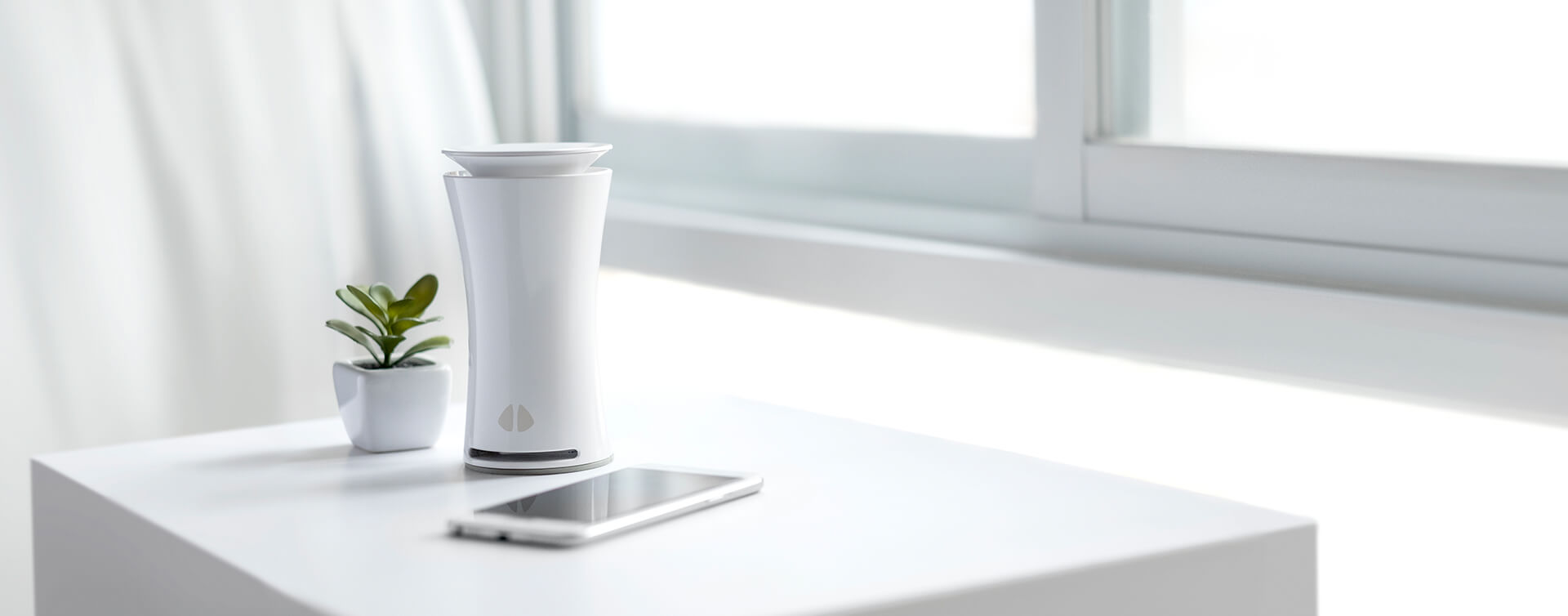1.6 million people die each year due to indoor air contaminants. This statistic is incredibly relevant in a world that’s still grappling with the implications of the coronavirus pandemic and most people are forced to stay indoors.
With attention squarely focused on post-pandemic workspaces, many companies are unaware of the critical role of air quality as workers are recalled back to offices, students head back to school, factories re-open to workers, and hospitals see a steady stream of patients. Besides preventing the adverse effects of indoor pollution, good indoor air quality can limit airborne disease infection and improve people’s productivity and well-being.
Public awareness about the right to health and well-being conditions remains low, partly attributed to a lack of information and data. It goes without saying, therefore, that sharing indoor air quality data is crucial to re-establishing public trust and long-term economic recovery.
Why sharing IAQ data matters right now
Since people have unfettered access to real-time (or near real-time) data in most areas of their personal lives, they expect to get accurate, data-driven insights to inform critical decisions. The COVID-19 pandemic has brought attention and demand for information about indoor air quality. A recent consumer survey by Carbon Lighthouse shows that nearly all respondents believe indoor air quality is vital for preventing COVID-19 transmission. As public buildings are reopened, a greater majority of the respondents agree that a rating system on the Indoor Air Quality (IAQ) performance of a building would reassure them of its safety.
Findings like this highlight the need for building owners and operators to promptly address the public’s genuine concern regarding IAQ. Building owners must not stop only at ensuring a safe and healthy indoor environment. They must also be able to effectively relay their efforts – and resulting impact – to their tenants to drive confidence.
The benefits of democratizing access to clear and accurate IAQ data
Increased consumer confidence
It is clear that real-time air quality information is needed to re-establish consumer confidence and will play a significant role in driving economic recovery from the devastating effects that COVID-19 has had on businesses. People are more likely to enter a building when they know they will be safe. Democratizing this information or giving customers ready access empowers them to make informed choices about the buildings they enter, thereby increasing their willingness to return to indoor spaces.
Economic growth
Research from the Berkeley National Laboratory suggests that improving IAQ in offices may contribute about $20 billion in annual revenue to the U.S. economy. The need for better IAQ will drive tenants to actively look for healthier buildings as they plan their economic recoveries.
Aside from the fact that it’s needed to re-establish pre-COVID-19 occupancy rates, it can also serve as the starting point for a much-needed modernization effort to build an agile, streamlined, and resilient real estate industry.
Building managers must apply data collection and visualization technologies to enable operators and occupants of public buildings to re-establish their occupancy rates – through democratized IAQ data that eases access to the comprehensive measures each building takes to mitigate the risk of airborne infections.
What occupants want to know
The leading causes of IAQ problems.
This could include information on pollutants such as;
- Biological contaminants – bacteria, fungi, viruses, dust mite allergens, fiberglass, insect bio residues, and so on, which may result from inadequate housekeeping, maintenance, water spills, and poor humidity control. Allergic responses to these substances can cause adverse health effects in allergic individuals and trigger asthmatic symptoms
- Chemical pollutants – organic chemicals that come from both natural and manmade sources. They include emissions, tobacco smoke, and gaseous by-products used within the building
- Airborne particles – (Particles that are solid or liquid molecules light enough to be suspended in the air). The largest among these, which may have visible traces in sub-beams, are non-respirable. However, smaller particles can be inhaled. While they can be drawn into a building from the outside, they can also be generated by activities that transpire within the building.
The relative significance of any specific source depends on the quantities present and how hazardous they are. In some situations, factors like the age of the source and how well it is maintained are essential. For instance, a poorly set up gas stove can emit a lot more carbon monoxide than one that isn’t correctly adjusted. Other sources, like furniture, may release pollutants continuously. Activities like renovating, smoking, or cleaning may do so on an intermittent basis.
The solutions being done to resolve these problems.
This might include information on building features and management processes such as;
- Ventilation – Occupants will want to know how adequately their buildings are ventilated, as it is a crucial mechanism for eliminating indoor air pollutants. This process is based on the building system’s ability to distribute conditioned air and eliminate contaminants. The American Society of Heating, Refrigeration, and Air Conditioning Engines (ASHRAE) standard 62.1-2004 clearly sets out the appropriate standards buildings need to adapt to ensure proper indoor ventilation
- Temperature and humidity control – A building that’s too cold or too hot will be uncomfortable for its occupants and encourage the growth of harmful microorganisms. That’s where proper temperature and humidity control come in. They enable favorable indoor environments while eliminating potential hazards like excess humidity or dryness.
- Filtration – Improving a building’s filtration system can minimize the amount of harmful pathogens that are being recirculated in an enclosed space. The Minimum Efficiency Reporting Value (MERV) is a standard that rates the overall effectiveness of air filters. A higher value MERV rating means finer filtration or a smaller amount of airborne contaminants can pass through the filter.
What IAQ monitoring reveals
Perceived air quality versus real-time measurements
One of the fastest ways to assess IAQ quality is in-person feedback. Although occupant perception is a subjective indicator, it is largely tied to factors that can be sensed such as temperature or dust. Perceived air quality should be evaluated together with other measurements such as carbon dioxide and particulate matter concentrations. This will give a clear picture of whether occupant perceptions align with particulate matter reports.
Exposure limits
These are the maximum concentrations of a specific factor that building occupants may be exposed to. While some exposure limits are legally enforceable, others are recommended standards. It is worth noting that some exposure limits may apply to a specific group of people within a building but not others.
Particulate matter concentrations
Particulate matter is an intricate mix of liquid or solid particles suspended in the air, as previously explained. It is a commonly used IAQ metric, as it determines how likely a building’s air can negatively affect health and wellness.
Volatile organic compound content.
Volatile organic compounds comprise all types of chemicals that contain carbon (except for carbon monoxide and carbon dioxide). Common examples that can be found in buildings include toluene, benzene, ketone, pesticides, and aromatic hydrocarbons.
Relative humidity levels
This indicates the amount of moisture within the building’s air. Humidity measurements should be taken at locations closest to the occupied spaces and as far away as possible from windows and doors.
Some important considerations for IAQ data sharing
In sharing air quality information, building owners and facility managers need to have a serious discussion around the following questions:
- Who should have access to the data?
- How should it be shared so that informed decisions can be made?
- What vital information does each of the stakeholders need to provide?
- What kind of infrastructure, software, and guidelines are in place to facilitate transparency and accuracy?
Data must be reliable, clear, and structured to be useful. Otherwise, it will be a significant waste of time and resources and sharing it will cause more harm than good.
Moreover, it’s important to note that merely making data transparent is not enough. Building owners and managers must develop the capability to harness valuable insights and use the data to innovate to improve indoor air quality.
How smart sensors enable data accuracy and transparency
In the era of big data and machine learning, smart sensors are increasingly becoming essential because of their multiple capabilities – they can sense and measure environmental conditions, store and collect data, and communicate with devices and systems and manage them adaptively. IoT and cloud technologies have enabled data sharing on a wider scale.
Sensor technology can monitor air quality changes in real-time and present accurate data for informed decisions. It enables automated data collection systems and feeds advanced analytics programs that generate actionable insights from the data. This information facilitates timely solutions to problems that building managers face on a nearly daily basis with regards to air quality. The information gathered from intelligent sensors validates these actions.
Even if buildings adopt strict ventilation standards or are designed to meet all the WELL or LEED specifications for high-threshold outdoor airflow, average tenants can’t tell that proper IAQ has been achieved. Sensors collect all the accurate data needed to verify that legal guidelines are being followed, and health and wellness certification standards consistently met.
Occupants and customers are taking on an increasingly active role in the IAQ discourse. There is a growing demand for data that empowers decisions about where people will live, work, and make their purchases. Building owners and managers who ignore this trend will miss out on the opportunity to gain their customers’ trust and eke out their path to sustainability.
Data democratization is the future of IAQ management and value realization. According to Bernard Marr, bestselling author of “Big Data in Practice,” the aim is “for everyone to use data at any time to make decisions with no barriers to access or understanding.” Companies that provide all of their occupants with the information they need to make better decisions and have better experiences will thrive.







